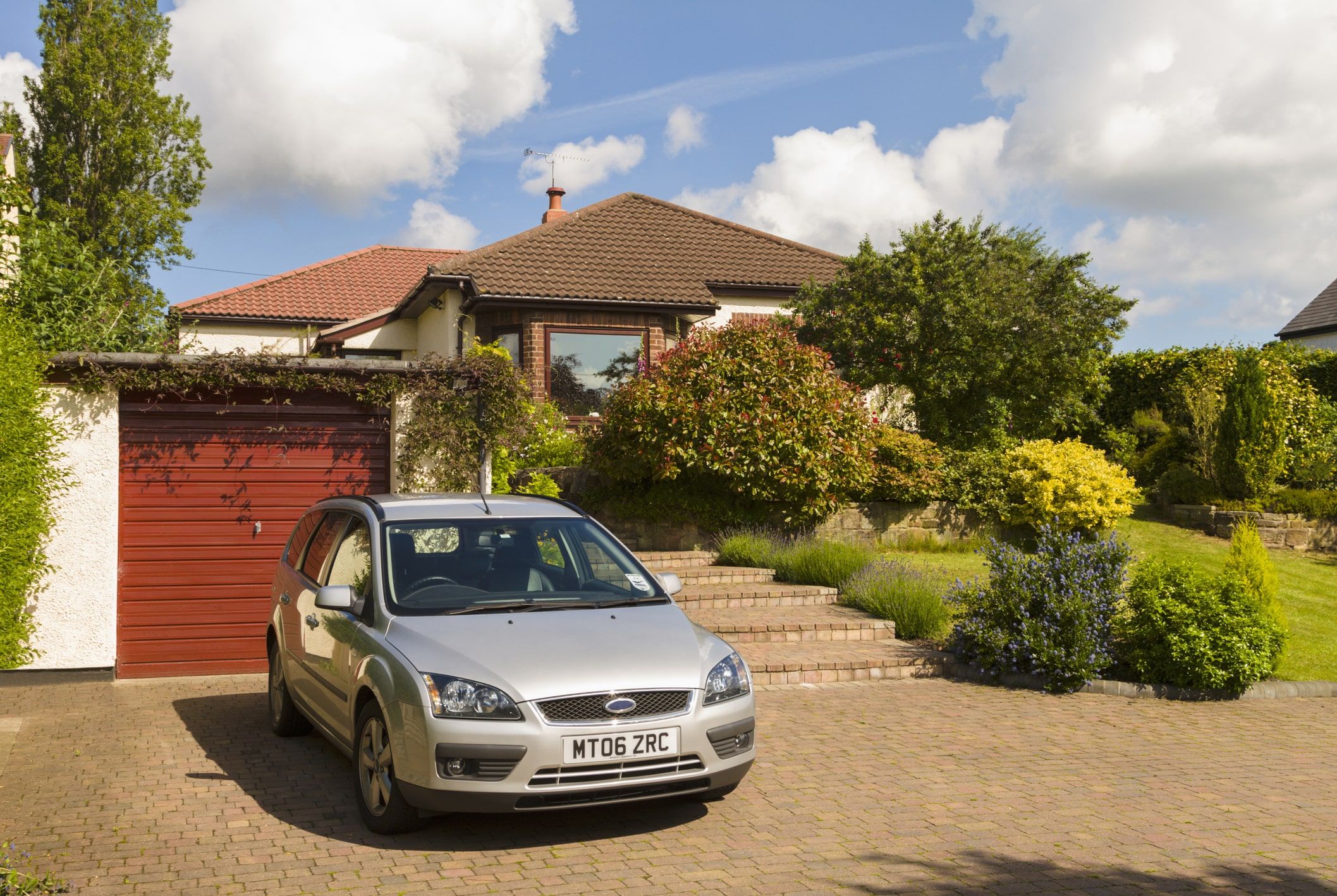Insured Declared Value (IDV) In Car Insurance
Insured Declared Value (IDV) In Car Insurance
Buying a car insurance policy is a long-term investment. Not only does it keep you protected from traffic rule violations, but it also protects you from the financial implications of several vehicle-related mishaps, like accidents, theft, earthquakes, riots, snowfall, cyclones, etc.
Since multiple factors go into deciding the cost of insurance for a four-wheeler, you need to be mindful when purchasing or renewing a vehicle insurance policy.
A crucial factor that decides a car insurance policy premium and affects the insurance claim is the car’s Insured Declared Value (IDV). However, not many people fully understand what IDV means in insurance and its effect on a car’s value.
So, here is a detailed explanation of what IDV in insurance is and how it affects you.
What is IDV in Insurance?
The IDV full form is Insured Declared Value. In simple terms, IDV can be understood as the market price of a car. It is the highest amount your car insurance provider will give you if your car gets stolen or damaged beyond repair.
Therefore, it is the maximum sum insured on your car for a car insurance policy. Note that total IDV means the maximum sum insured on your car insurance policy.
A car’s market value is decided based on its make and model, variant, age, etc. When the car is manufactured, the manufacturer lists its IDV without deducting any depreciation on it. The car owner declares the IDV when buying or renewing its insurance. The IDV is the primary factor behind the policy premium and the claim settlement limit on your car insurance policy.
The Importance of IDV in Car Insurance
The IDV value in car insurance is important for the following reasons:
Your maximum compensation against your insured car depends on its IDV.
A car’s IDV determines its risk level. A higher IDV means a higher level of risk. The insurer decides your car insurance policy’s premium based on its IDV.
At the time of claim settlement, the repair and replacement expenses of the car’s parts are based on its IDV.
If your car gets damaged beyond repair or stolen, you will get an amount equal to the car’s IDV.
While declaring an unnecessarily high IDV can result in a high car policy premium, declaring a low IDV can result in a low sum insured. Therefore, you must find an adequate IDV for your four-wheeler.
How to Calculate IDV for Car Insurance?
An IDV calculator is a quick and effective tool to calculate your car's Insured Declared Value. You can also do this calculation manually using the easy formulas explained below.
The selling price of a car that the car manufacturer decides at the time of selling the car forms the basis of the IDV calculation. The depreciation on the vehicle parts is deducted from the selling price to calculate the IDV.
The formula for calculating the IDV is:
Insured Declared Value of Car = Manufacturer’s Listed Price - Depreciation Value
The above formula is the simple calculation for the IDV calculation if no accessories were added to the vehicle after you purchased it.
However, if accessories were added post-purchase of the vehicle, you can use the following formula to calculate the IDV of a car:
Insured Declared Value of Car = (Manufacturer’s Listed Price - Depreciation Value) + (Cost of Vehicle Accessories - Depreciation Value of Vehicle Accessories)
Depreciation Schedule to Calculate the IDV of a Car
The Insurance Regulatory and Development Authority of India (IRDAI) has set the standard depreciation rates for a car which should be used for the purpose of the IDV calculation.
The IDV is calculated based on a car’s age for the first 5 years. Here is the table for the IDV calculation as per IRDAI:
| Age of the Car | Percentage IDV Value Depreciation of the Car for IDV Calculation |
|---|---|
| 6 months and below | 5% |
| Between 6 months and 1 year | 15% |
| Between 1 to 2 years | 20% |
| Between 2 to 3 years | 30% |
| Between 3 to 4 years | 40% |
| Between 4 to 5 years | 50% |
For cars that are more than 5 years old, the IDV is mutually decided by the insurer and the car owner. Instead of using the car’s depreciation value, its condition and survey report of the surveyor form the basis of the IDV calculation for old vehicles.
Components of Car Insurance IDV
Here is the list of the various elements on which a car’s IDV calculation is based:
The car’s registration details.
The location where the car was registered.
The car’s showroom price.
The car’s registration date and type.
Make and model of the car.
The car engine’s cubic capacity.
Points to Remember When Calculating Your Car’s IDV
A car’s value is calculated by deducting its depreciation value from its market price. Additionally, the cost of fuel and maintenance should also be deducted.
A true valuation of a car’s IDV may result in a lower car insurance premium. It will also result in a rightful claim settlement.
It is advisable to conduct an insurance value check and discuss the IDV with the car manufacturer before agreeing to the IDV as decided by the insurance provider.
Check the insurance premium calculation to ensure the policy premium is based on the car’s IDV.
Factors that Affect a Car Insurance IDV
Age of the car: A car’s age is one of the prime determinants of its IDV. As the market value of a car reduces with age, its IDV also reduces. Therefore, the IDV of an old car is lower compared to a brand-new four-wheeler.
Type of car: The Indian automobile market offers a variety of car types these days, including sedans, hatchbacks, compact SUVs, SUVs, and MUVs. All these car types have different features and prices. Therefore, their IDVs are also different.
The city where the car is registered: A car registered and running in a high-traffic metropolitan city like Delhi or Mumbai is more prone to risks than a car registered in a small town. Thus, the city of the car’s registration also affects its IDV.
Standard applicable depreciation from IRDAI: The depreciation of a car is calculated based on the depreciation schedule prescribed by the IRDAI. It increases as the car gets older.
Additional accessories: You may have added several accessories to a car after purchasing it. The depreciation in the value of these accessories, based on their age and working condition, is also accounted for during the IDV calculation.
What Happens if You Decrease Your Car’s IDV?
Decreasing your car insurance policy’s IDV will result in a lower premium. However, it will have certain associated advantages and disadvantages.
Advantages of Decreasing Your Car’s IDV
As discussed before, your car insurance policy premium reduces if you decrease its IDV.
The lower policy premium can result in significant savings over a period of time.
You can use this money for other purposes, like buying insurance riders to enhance its insurance coverage scope.
Disadvantages of Decreasing Your Car’s IDV
A lower IDV results in a lower sum insured. If your car gets stolen, you will not get its actual value during claim settlement if the IDV is less.
If the accidental damages to your car cost more than the IDV, you will have to pay them out of your own pocket.
What Happens if You Increase Your Car’s IDV?
Increasing your car’s IDV has its own set of advantages and disadvantages too.
Advantages of Increasing Your Car’s IDV
A higher IDV results in a higher sum assured on your car insurance plan.
The accidental claim amount for a higher IDV is also high, and you will not be forced to pay for the damages on your own.
If you must buy a new car altogether, a high IDV will be enough to cover the buying cost of a new four-wheeler.
Disadvantages of Increasing Your Car’s IDV
A high IDV results in a high car insurance premium. It will result in a costlier car insurance policy.
If you never need to raise a claim for total loss for your insured car, you may never fully benefit from its high IDV.
When Should You Have a Low IDV for Your Insured Car?
It is best to have the true value of a car as its IDV. However, you may want to have a lower IDV for your car in some circumstances, like:
If your car is old and does not have a high market value.
If you want to restrict the car insurance policy premium according to your budget.
If you will not be affected by a lower sum insured.
When Should You Have a High IDV for Your Insured Car?
In certain circumstances, you may want to have a high IDV for your car insurance policy, like:
If you own a luxury or expensive car.
If your car’s spare parts are expensive, hard to find, or require expertise for their repair and replacement.
If you have a budget to comfortably pay a higher car insurance premium amount.
IDV amd Claims
When you buy a car insurance policy, you must declare the vehicle’s IDV. Usually, the IDV is not required for claim calculation. However, it is considered for claim settlement in the following cases:
If the vehicle is stolen: If your car gets stolen, you must file an FIR at the earliest. When the police declare your car ‘non-traceable,’ you can file for a car insurance claim. In case of theft, the insurer provides the car’s Insured Declared Value as compensation.
In case of constructive total loss: If your car suffers extreme damages that are beyond repair due to an accident, earthquake, cyclone, riot, vandalism, or other situations, you must file a total damages claim as the cost of such repairs is extremely high or even impossible. As the repair cost here may even exceed the car’s IDV, it is considered a constructive total loss, and the insurer will provide approximately the car’s IDV as compensation.
In case of a total loss: If your car gets damaged beyond repair, it is considered a total loss of the vehicle. The insurer will compensate approximately the car’s IDV in such a situation.
Busting Myths About IDV in Insurance for Cars
Myth: The insured cannot change the IDV decided by the insurance provider.
Fact: The insured can change the car’s IDV suggested by the insurance provider. You can consult the IDV provided for cars of similar brands and age and the sum assured you want for your car for this.
Myth: The car’s IDV is also its resale value.
Fact: A car’s resale value depends on several factors, such as the demand for the car brand, its working condition, spare parts and accessories used, its accidental history, etc.
Myth: Decreasing the car’s IDV will help me save significantly.
Fact: While you can save on the insurance policy premium with a low IDV, you may have to pay a hefty price if the car meets with an accident or gets stolen.
Relation Between a Car’s IDV and its Insurance Policy Premium
The first point to understand here is that the IDV needs to be declared only when you buy a comprehensive car insurance policy. For a third party car insurance policy, the IDV has no value since this policy does not cover own vehicle damages.
You must declare your car’s IDV when you buy a four-wheeler insurance policy and every year when you renew it. With every passing year, your car’s market value and IDV will decrease.
With Tata AIG, you can enhance your car insurance policy’s coverage by adding insurance riders from an expansive list of 12 policy riders. Use our car insurance calculator to know the premium you will pay for your desired insurance coverage and choose what fits your budget.
Disclaimer / TnC
Your policy is subjected to terms and conditions & inclusions and exclusions mentioned in your policy wording. Please go through the documents carefully.



